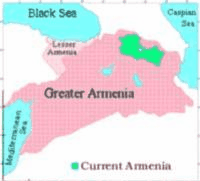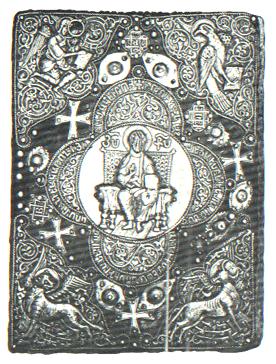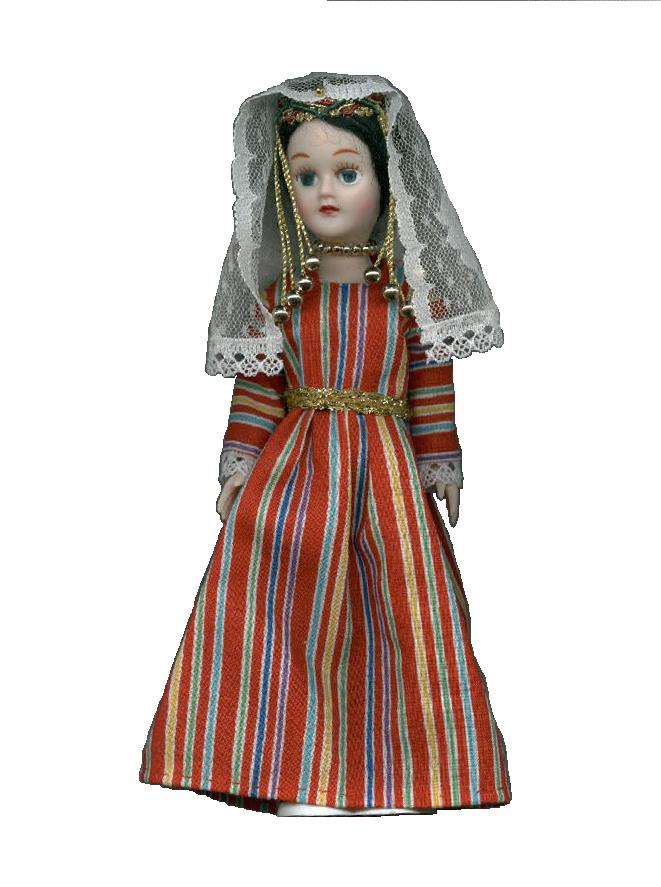Back to the collection
Home page
Next doll
Previous doll
 Flashing arrow shows regional origin of this costume
Flashing arrow shows regional origin of this costume
HISTORY
* The most famous trading centers of 18th-20th centuries were Karen, Van, Yerevan, Alexandropol,
Shushi, Tiflis, as well as Constantinople and other cities. Carpet art is the most loved and
widespread phenomenon with stable fraditions in Armenian life from ancient times. Carpets have
been woven as far back as before Christ's birth. The historian Herodotus (485 - 425 B. C.)
informs us that "the inhabitants of the Caucasus dyed the wool with a number of plants having
dyeing qualities and they used it to make woven fabrics covered with drawings which never lose
their brilliant color... ". Dvin, Ani, Kareen, Kesaria, Sebastia, towns and settlemants in

|
Gospel. Silver binding dated 1254.
Antilias, Armenian Catholicosate.
|
Vaspourakan, Tapon, Goghtan, Syunik and other provinaea were outsfanding centres of the
Armenian carpet. Marco Polo, the Italian traveller (XIII c.) commented: "The Armenians
and Greeks in the three major towns of Konya (lkonio), Kaiseri (Kesaria) and Sivas
(Sebastia) made the most beautiful and finest rugs". The Armenians of those three towns had
been deported in the first half of the XI century from Vaspurakan, Ani, Kars.
Kareen, Dvin, Ani, Kesaria, Sebastia, towns and settlemants in Vaspourakan, Tapon, Goghtan,
Syunik and other provinaea were outsfanding centres of the Armenian carpet. The Armenian rugs
exported from Western Armenia (currently occupied by Turkey) were sold mainly in Europe and
America where the products of Kareen, Baberd, Manazkert, Moosh, Sassoon, Van, Akhtamar, Norshen,
Vostan, Artskeh, Berkri, Moks, Shatakh, Akni, and other towns were given high prices.
* From the earliest times, Armenia has been one of the most important centres of metalworking
in Asia Minor and the Transcaucasus. Four thousand years ago historic Armenia was a
metalworking centre excelling in gold, silver, copper and iron. The metal objects obtained
from the excavations at Lchashen, Armavir, Metzamor, Karmir Blur, Sisian, Dvin and Ani are
witnesses of a high standard of metalworking. Vaspurakan, and specially Van - Cilicia,
Sebastia, Caeseria, Kareen, Shirak, Sunik, Artsakh, and the Plain of Ararat were centres
for the artistic treatment of metal and the production of ornaments and utensils.
Top of page



